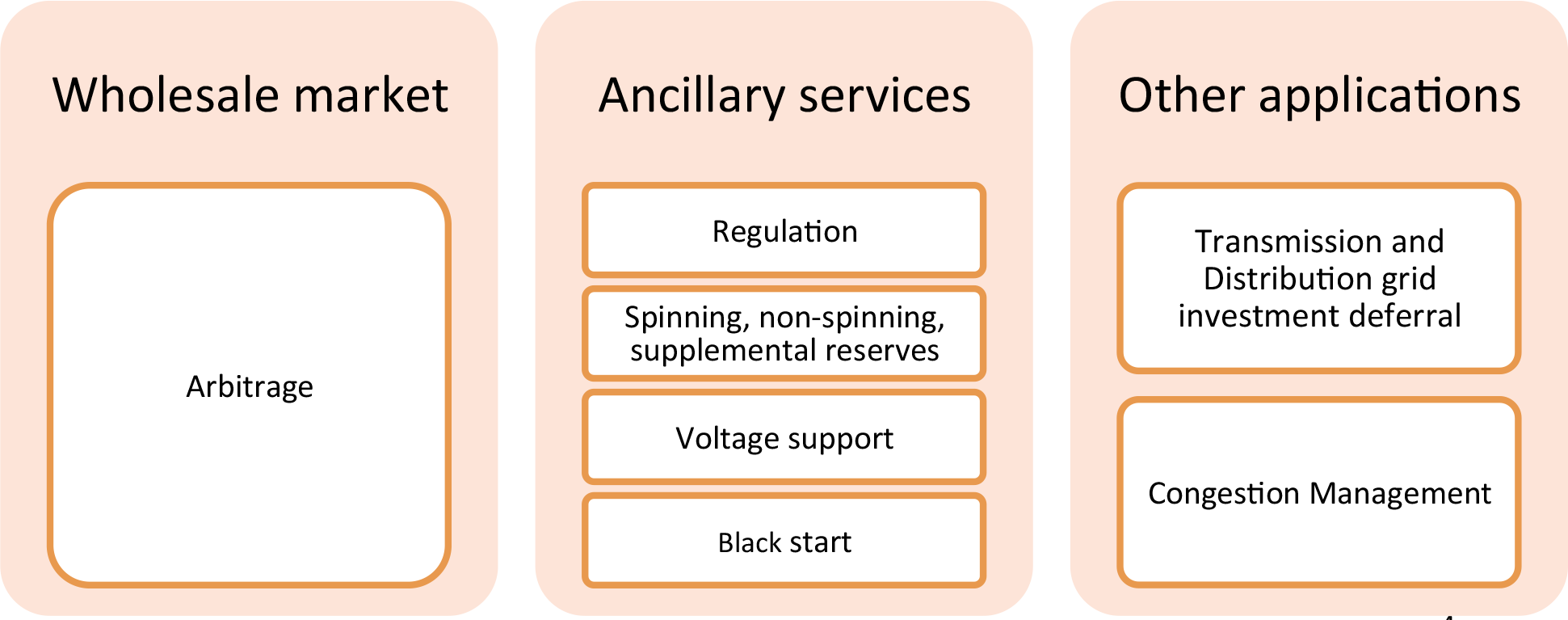The EU 2020 energy and climate targets have led to a significant increase in the share of renewable energy sources in the EU’s electricity supply mix. Going forward, EU’s ambitious goal of reducing the greenhouse gas emissions by at least 80% of the 1990 value by 2050 indicates that this growth in renewable generation can be expected to increase over the coming years.
A power system based on renewable energy needs flexibility to balance demand and supply. OFGEM[1] defines flexibility as “modifying generation and/or consumption patterns in reaction to an external signal (such as a change in price, or an electronic message) to provide a service within the energy system”.
Storing electricity is one way of providing flexibility to the system. Electrical storage can be defined as any device that can store electrical energy and make it available when required. Therefore, it could be said that while “copper wires” transmit electricity over geographical distances, storage transmits electricity across time.
Traditional storage technologies, such as pumped hydro that accounts for most of the current storage capacity, have been around for ages, but due to rapid innovation, large-scale batteries (also referred to as electro-chemical storage devices) are only recently becoming economically viable. A significant growth in the battery storage installations in the EU has been observed since 2009[2]. It is projected that storage capacity for utility scale applications alone is expected to reach 14 GW by 2023[3].
Batteries have some unique characteristics that set them apart from the traditional storage resources. Unlike traditional technologies, these devices are modular and can be installed quickly. Hence, they are not constrained by location. Not only can batteries be installed at any location but they can also be moved to another location as and when required in a cost effective manner. This makes them an invaluable resource for providing location specific services such as voltage control for distribution grids.
Batteries can participate in different segments of the electricity value chain (See Figure 2). These devices can provide ancillary services, participate in the wholesale market (as both buyers and sellers) and can also be used for congestion management. The ongoing energy transition requires a lot of investments in transmission and distribution grids. Managing grids smartly by using batteries and other potential sources of flexibility can defer some grid investments. Thus the functional versatility of batteries truly make them the “jack of all trades”.

Figure 2: Possible applications of utility scale battery storage (Adapted from Kempener and Borden, (2015)[4])
However, this functional versatility of batteries also makes it extremely difficult to define them in the current regulatory framework. In this regard, two key topics of debate are the following. The first is concerning the ownership of such assets, which can be aptly summarised by the phrase “who will master this jack of all trades?”. While the second debate centres around the (in) ability of the current market structures in providing a level playing field for new products such as batteries. In the forthcoming weeks we will look into the various aspects of these debates in depth.
Finally, in a discussion about batteries, the role of electric vehicles (EVs) cannot be ignored. EVs by some have been described as “storage on wheels” that could be used as yet another flexibility resources, while others see them as a risk to our existing system. In the last post on this topic, we discuss this dilemma in greater detail.
[1] OFGEM, 2015. Position Paper: Making the electricity system more flexible and delivering the benefits for consumers. London.
[2] Source: http://www.energystorageexchange.org/
[3] EUROBAT, 2016. Battery Energy Storage in the EU: Barriers, Opportunities, Services and Benefits. Brussels.
[4] Kempener, R., Borden, E., 2015. Battery storage for renewables: Market status and technology outlook. Int. Renew. Energy Agency, Abu Dhabi.






